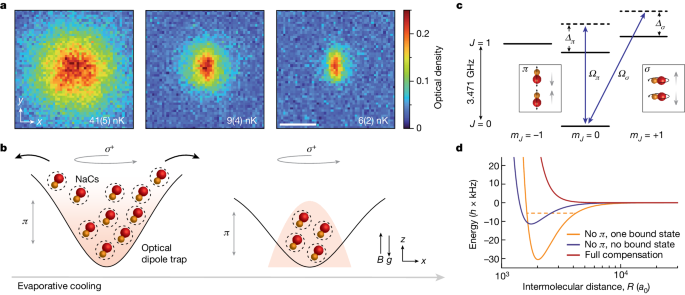Realization of a Bose-Einstein Condensate of Dipolar Sodium-Caesium Molecules
The content describes the realization of a Bose-Einstein condensate (BEC) of dipolar sodium-caesium molecules. Quantum degenerate samples of ultracold dipolar molecules promise the realization of new phases of matter and new avenues for quantum simulation and quantum computation. However, rapid losses have so far prevented evaporative cooling to a BEC.
The researchers report that by strongly suppressing two- and three-body losses via enhanced collisional shielding, they were able to evaporatively cool the sodium-caesium molecules to quantum degeneracy and cross the phase transition to a BEC. The BEC reveals itself by a bimodal distribution when the phase-space density exceeds 1, with a condensate fraction of 60(10)% and a temperature of 6(2) nK. The BEC is found to be stable with a lifetime close to 2 s.
This work opens the door to the exploration of dipolar quantum matter in regimes that have been inaccessible so far, promising the creation of exotic dipolar droplets, self-organized crystal phases, and dipolar spin liquids in optical lattices.
요약 맞춤 설정
AI로 다시 쓰기
인용 생성
소스 번역
다른 언어로
마인드맵 생성
소스 콘텐츠 기반
소스 방문
www.nature.com
Observation of Bose–Einstein condensation of dipolar molecules - Nature

더 깊은 질문
